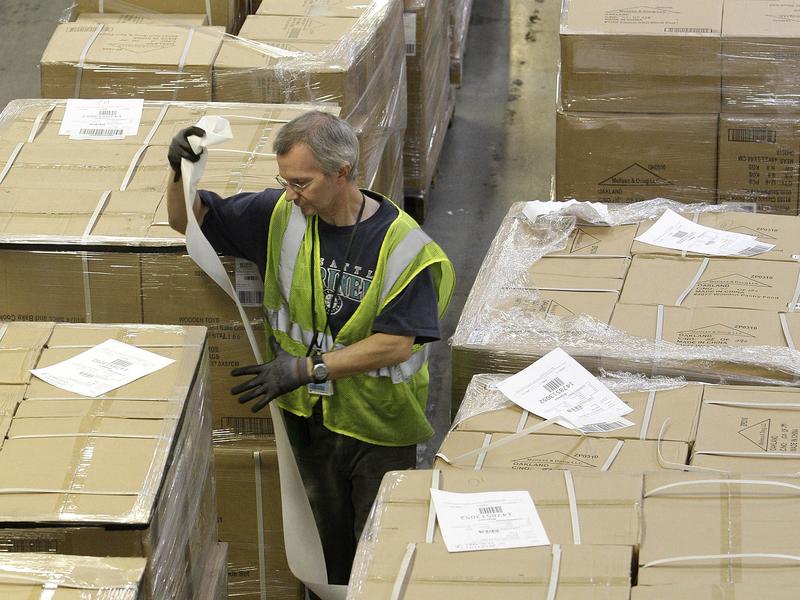War Of Words Escalates Between Amazon And 'The New York Times'

In a blog post published Monday morning, Amazon is pushing back against an August story in The New York Times that portrayed it as a soul-crushing workplace where employees were forced to work long hours and encouraged to tear each other apart at meetings.
"The Times got attention for their story, but in the process they did a disservice to readers, who deserve better," wrote Jay Carney, Amazon's vice president of worldwide corporate affairs, on the blogging site Medium.
Carney, the former White House spokesman, says the Times failed to ask for Amazon's response to some of the most negative anecdotes in the story, despite working on the story for six months.
Carney cited one source quoted in the article as saying, "nearly everyone I worked with, I saw cry at their desk." Carney says that person had left Amazon after an internal investigation revealed he had attempted to defraud vendors and conceal it by falsifying business records.
Carney also took issue with some of the other employees quoted, saying they misrepresented what happened at the company or later backtracked from their remarks:
"Journalism 101 instructs that facts should be checked and sources should be vetted. When there are two sides of a story, a reader deserves to know them both. Why did the Times choose not to follow standard practice here?"
But the Times insists that its story, which was based on dozens of interviews, is an accurate and nuanced depiction of the retailers' workplace culture.
In a response, Times Executive Editor Dean Baquet said the newspaper on Monday spoke to the former employee, who disputed the account of his departure and said he was never confronted with allegations of personal misconduct.
"If there were criminal charges against him, or some formal accusation of wrongdoing, we would certainly consider that. If we had known his status was contested, we would have said so," Baquet wrote.
The story, which ran on Aug. 15, portrayed a brutal, Darwinian but also exhilarating work environment where employees "tried to reconcile the sometimes-punishing aspects of their workplace with what many called its thrilling power to create."
"At Amazon, workers are encouraged to tear apart one another's ideas in meetings, toil long and late (emails arrive past midnight, followed by text messages asking why they were not answered), and are held to standards that the company boasts are 'unreasonably high.' "
A few days after the story's publication, the Times' public editor, Margaret Sullivan, criticized some aspects.
"It gave Amazon its due in some ways, as both a company and an employer," she said. But she noted, "it should have provided more balance and context."
In his rejoinder to Carney's article, Baquet noted that Amazon had challenged the credibility of just four of the more than two dozen people quoted by name in the story.
He also noted that many people who commented on the article, in the Times or elsewhere, said they'd had similar experiences at Amazon.
"And any reading of the responses leaves no doubt that this was an accurate portrait," he said.
But he added: "There were some, of course, who disagreed; the story did not assert that every Amazon employee had a difficult time there."
9(MDEwODYxNTQyMDEzNjAxODk2Nzc2NzNmYQ001))